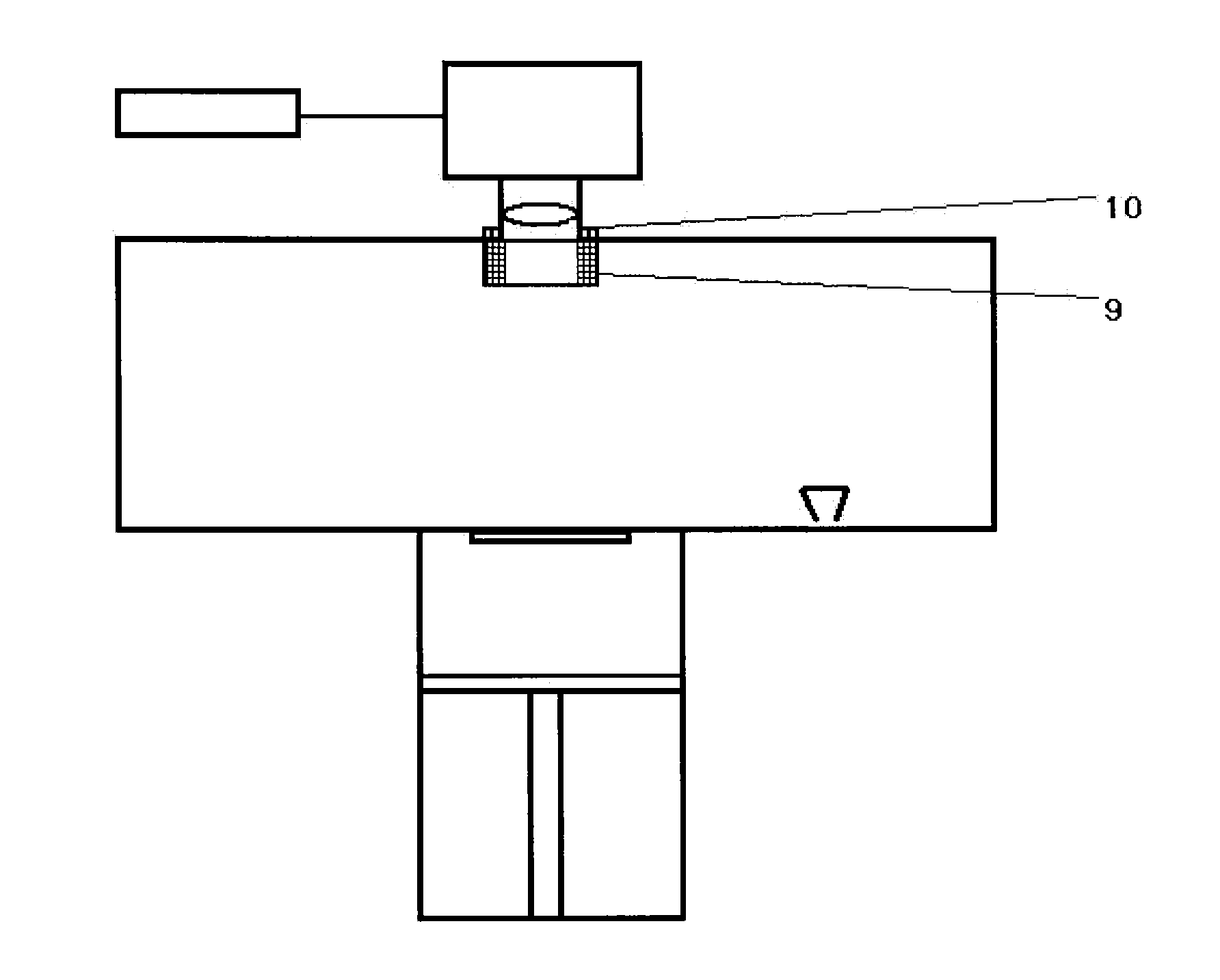Apparatus for avoiding deposits on optical components in the laser sintering process
a technology of optical components and sintering process, which is applied in the direction of additive manufacturing process, electric/magnetic/electromagnetic heating, manufacturing tools, etc., can solve the problems of affecting the process, releasing or vaporizing the contents of polymeric powder, and incurring considerable additional costs
- Summary
- Abstract
- Description
- Claims
- Application Information
AI Technical Summary
Benefits of technology
Problems solved by technology
Method used
Image
Examples
example 1
Not According to the Invention
[0076]The construction process is carried out in an EOSINT P380 from EOS GmbH. A PA12 powder with the powder properties in Table 1 is processed. The process temperature is 170° C. The energy input from the laser is 60 mJ / mm2 (laser power 36.0 W, scan velocity 2000 mm / s, distance between irradiation lines 0.3 mm). Heavy deposits are discernible on lens and pyrometer after the end of the construction process. Amount of deposit on lens: 0.009 g. The difference between the centre and the corners of the underside of the resultant component is 0.84 mm.
example 2
Not According to the Invention
[0077]The construction process is carried out in an SPro60HDHS from 3d-systems. A PA12 powder with the powder properties in Table 1 is processed. The process temperature is 168° C. The energy input from the laser is 36 mJ / mm2 (laser power 65.0 W, scan velocity 6000 mm / s, distance between irradiation lines 0.3 mm). Heavy deposits are discernible on the lens after the end of the construction process. Amount of deposit on lens: 0.007 g. The difference between the centre and the corners of the underside of the resultant component is 0.71 mm.
[0078]In Examples 1 and 2, attempts are made to direct a stream of inert gas onto the lens in such a way that the volatile constituents cannot condense on the lens. As shown by Examples 1 and 2 not according to the invention, this is not adequately successful. The inert gas, markedly colder than the construction chamber, also serves for the cooling of the lens.
example 3
Not According to the Invention
[0079]The construction process is carried out in an EOSINT P380 from EOS GmbH. A PA6 powder with the powder properties in Table 2 is processed. The process temperature is 199° C. The energy input from the laser was 60 mJ / mm2 (laser power 36.0 W, scan velocity 2000 mm / s, distance between irradiation lines 0.3 mm). Extremely heavy deposits are discernible on the lenses and pyrometer after the end of the construction process. Amount of deposit on each lens: 0.026 g. The difference between the centre and the corners of the underside of the resultant component is 0.94 mm.
PUM
| Property | Measurement | Unit |
|---|---|---|
| area | aaaaa | aaaaa |
| temperature | aaaaa | aaaaa |
| temperature | aaaaa | aaaaa |
Abstract
Description
Claims
Application Information
 Login to View More
Login to View More - R&D
- Intellectual Property
- Life Sciences
- Materials
- Tech Scout
- Unparalleled Data Quality
- Higher Quality Content
- 60% Fewer Hallucinations
Browse by: Latest US Patents, China's latest patents, Technical Efficacy Thesaurus, Application Domain, Technology Topic, Popular Technical Reports.
© 2025 PatSnap. All rights reserved.Legal|Privacy policy|Modern Slavery Act Transparency Statement|Sitemap|About US| Contact US: help@patsnap.com



